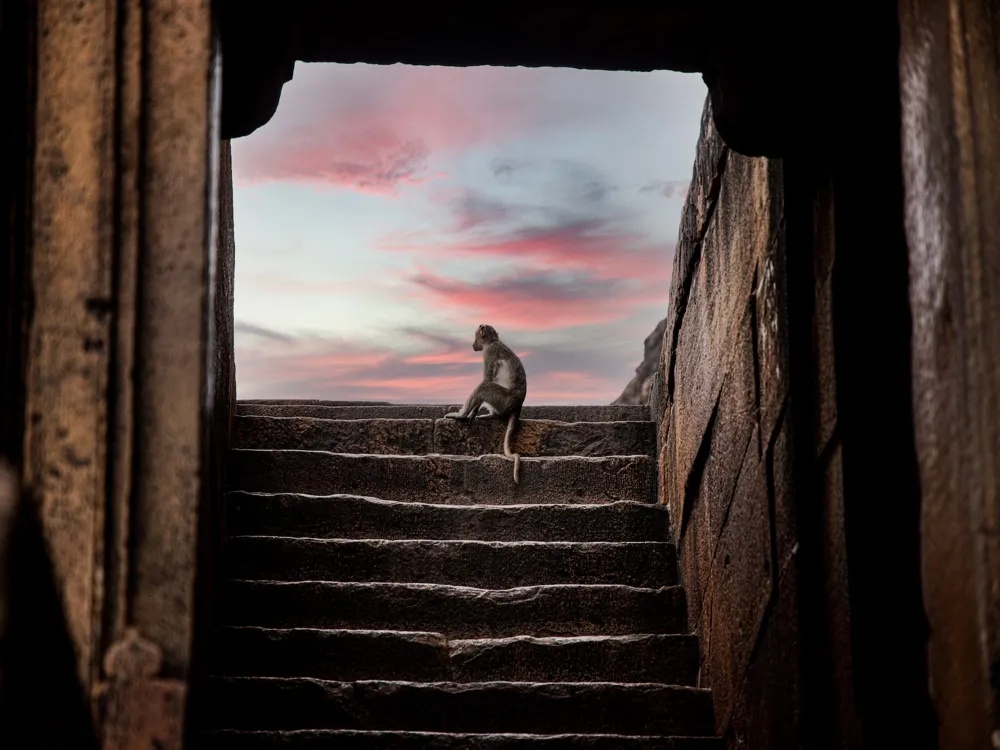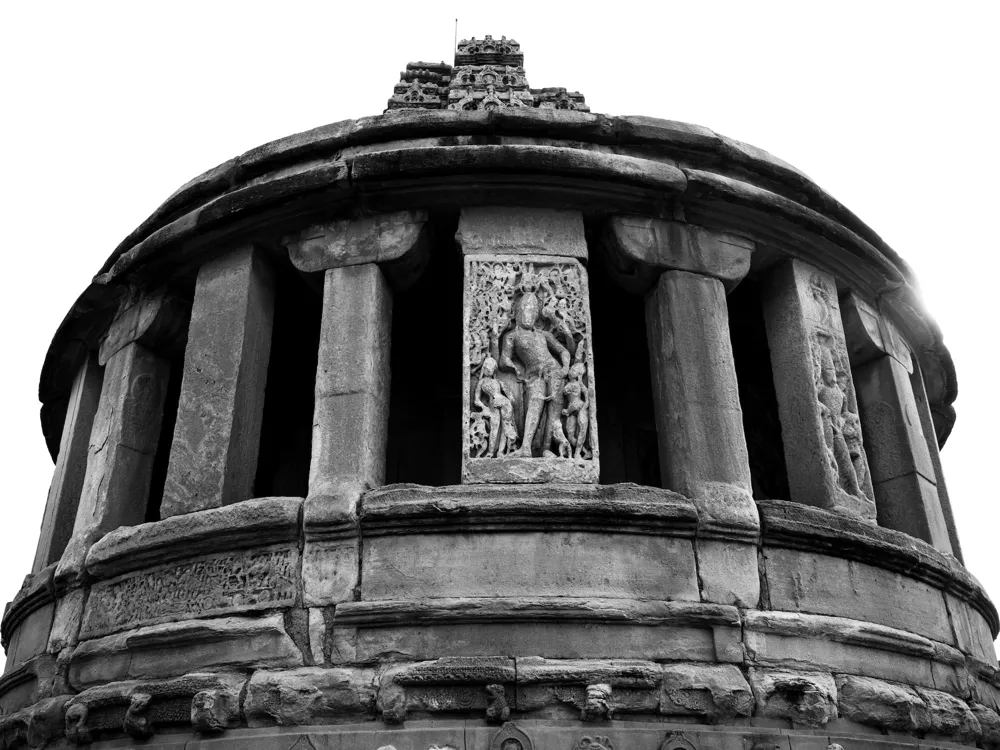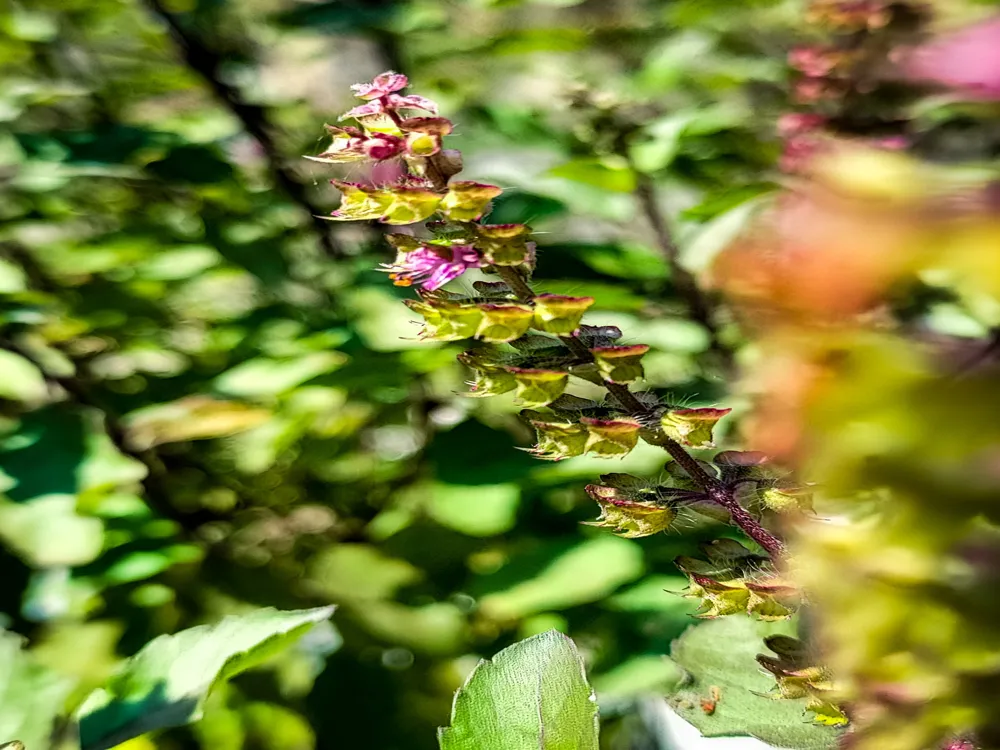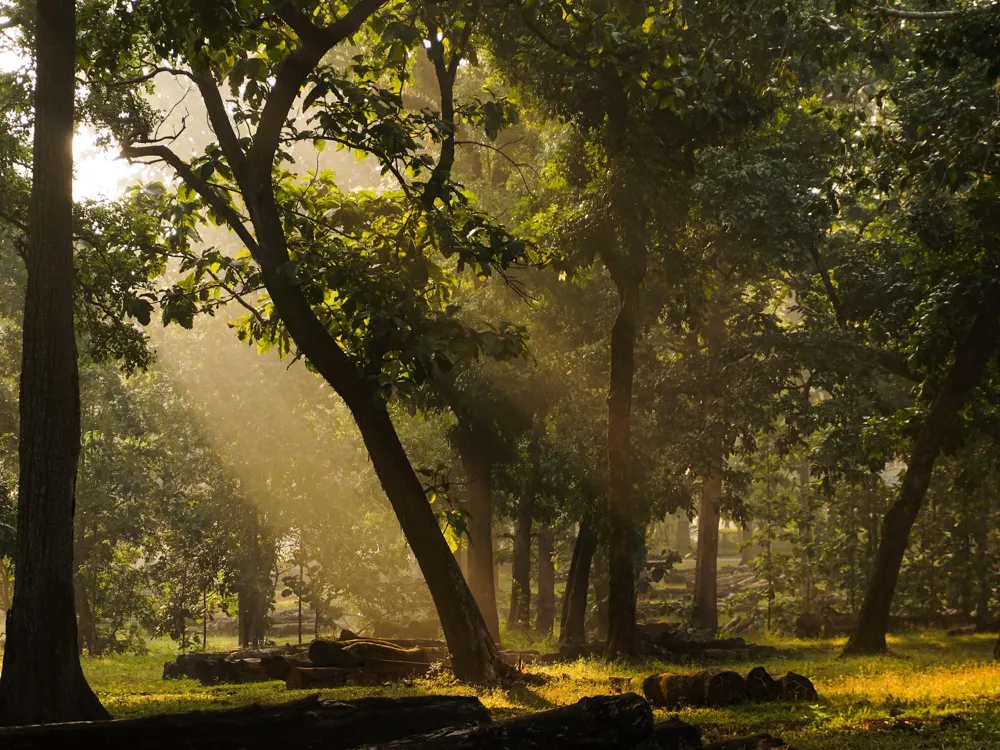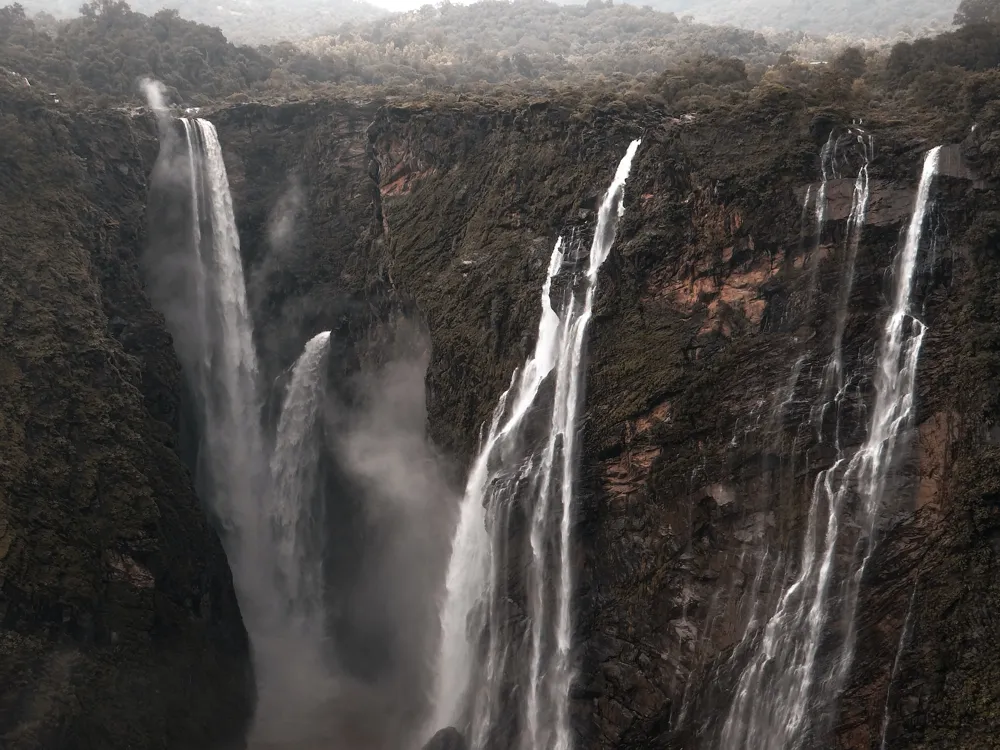The Galaganatha Temple is a remarkable architectural marvel located in Pattadakal, a UNESCO World Heritage site in Karnataka, India. This temple, part of a cluster of ten major temples at Pattadakal, stands as a testament to the architectural ingenuity of the Chalukya dynasty. The Galaganatha Temple is dedicated to Lord Shiva and is known for its historical and religious significance. The region of Pattadakal was a melting pot of various cultures and artistic styles, and the Galaganatha Temple embodies this blend beautifully. The temple not only represents the religious fervor of its era but also showcases the peak of Chalukyan architecture. Constructed in the 7th century CE, the Galaganatha Temple features a distinctive style that signifies the transition from the rock-cut architecture of the Badami Chalukyas to the structural temples built by the Kalyani Chalukyas. This transition is evident in the temple’s layout and design, which combines elements of both Dravidian (South Indian) and Nagara (North Indian) styles. The temple stands on a high platform, a feature typical of the Chalukyan temples, providing it with an imposing presence. The main deity of the temple, Lord Shiva, is represented in the form of a Linga, a symbolic representation common in Hindu temples. The architecture of Galaganatha Temple is a fine example of the eclectic Chalukyan style, which merges the North Indian Nagara and the South Indian Dravidian architectural forms. The temple's structure is characterized by a sanctum (garbhagriha), a circumambulation path (pradakshina patha), and a main hall (mandapa). The sanctum houses the deity, Lord Shiva, in the form of a Linga. The mandapa is adorned with intricately carved pillars and a ceiling that showcases the craftsmanship of the Chalukyan artisans. The outer walls of the Galaganatha Temple are decorated with an array of sculptures and friezes depicting various Hindu deities, mythological scenes, and narratives from the Puranas. These carvings are not just decorative elements but also serve to tell stories and convey messages from the scriptures. The temple's tower (shikhara) is another prominent feature, showcasing the Nagara style's influence with its curvilinear form. This tower rises above the sanctum and is adorned with miniature decorative towers (urushringas), adding to the temple's grandeur. A unique aspect of the Galaganatha Temple's architecture is its emphasis on symmetry and geometry. The temple's layout is based on specific mathematical principles and ratios, which is evident in the harmonious proportions of its various components. The use of sandstone as the primary building material also adds a distinct charm to the temple, with its warm hues and ease of carving allowing for detailed and delicate sculptural work. The ideal time to visit the Galaganatha Temple is between October and March when the weather is pleasant. This period avoids the heavy monsoons and the extreme heat of the summer months. Visitors are advised to dress modestly, keeping in mind the temple’s religious significance. It's also important to maintain a respectful demeanor within the temple premises. Photography is usually allowed in the temple complex, but it's advisable to check for any specific rules or fees associated with photography at the site. Hiring a local guide can enrich your visit, as they can provide detailed insights into the temple's history, architecture, and cultural significance. Given the local climate, it's important to stay hydrated. Also, carry sun protection like hats, sunglasses, and sunscreen. Galaganatha Temple in Pattadakal is accessible by various modes of transportation. The nearest airport is in Belgaum, about 150 kilometers away. From there, one can hire a taxi or take a bus to Pattadakal. The nearest railway station is in Badami, which is around 22 kilometers from Pattadakal. Regular bus services and taxis connect Badami to Pattadakal. Additionally, Pattadakal is well-connected by road and is accessible by bus from major cities like Bengaluru, Hyderabad, and Goa. Read More:Overview of Galaganatha Temple, Pattadakal
Architecture of Galaganatha Temple
Tips When Visiting Galaganatha Temple
Best Time to Visit
Dress Code and Conduct
Photography
Local Guides
Stay Hydrated and Protected
How To Reach Galaganatha Temple
Galaganatha Temple
Pattadakal
Karnataka
NaN onwards
View pattadakal Packages
Pattadakal Travel Packages
View All Packages For Pattadakal
Top Hotel Collections for Pattadakal

Private Pool

Luxury Hotels

5-Star Hotels

Pet Friendly
Top Hotels Near Pattadakal
Other Top Ranking Places In Pattadakal
View All Places To Visit In pattadakal
View pattadakal Packages
Pattadakal Travel Packages
View All Packages For Pattadakal
Top Hotel Collections for Pattadakal

Private Pool

Luxury Hotels

5-Star Hotels

Pet Friendly












